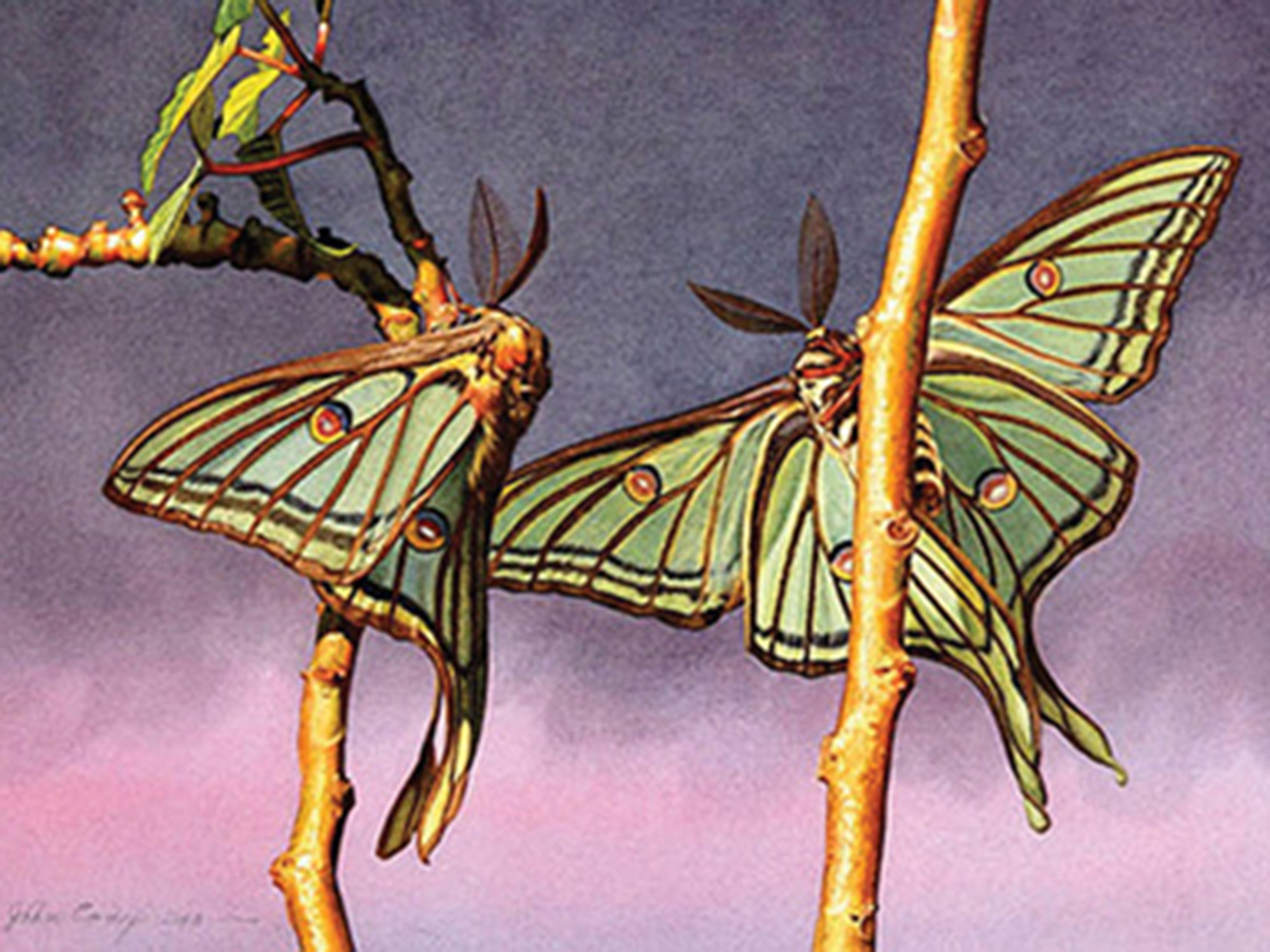John Cody’s Moths Reemerge

As the Midwest anticipates the rare co-emergence of the 13- and 17-year cicadas this spring, Sternberg Museum showcases its own entomological re-emergence. This one’s not as loud, but it’s much more beautiful. It features colorful watercolors of saturniid moths by the late Dr. John Cody. These exquisite paintings come from the museum’s permanent collection. Most of the paintings on display were presented to the museum by Cody’s daughter, Andrea Russell, in 2009. One was gifted by his sister, Genevieve Cody, in 2012.
Audubon of Moths
Cody’s introduction to the saturniid moths, more commonly known as giant silk moths or emperor moths, came when he was a young child growing up in Brooklyn, New York. The cecropia he discovered outside his apartment building left an indelible impression and sparked a lifelong passion to capture and share the beauty and elegance of giant silk moths through painting.
First trained as a medical illustrator, which Cody called “the most scientific form of art,” he later earned an MD to pursue a career in psychiatry, “the most artistic form of medicine.” Through it all, he painted moths. He traveled the world seeking out his subjects, reared caterpillars by hand, and created untold moth portraits. He earned renown as “The Audubon of Moths.”
About Giant Silk Moths
Approximately 70 kinds of saturniids live in the U.S., but a majority of the 1,600 species found worldwide inhabit tropical forests. Most of these large moths fly only at night and adults live just a few days. Caterpillars provide a protein-rich food source in some cultures and most spin silk cocoons. Several species support traditional wild silk industries. In general, they do not harm agricultural plants.
In recent decades, worldwide silk moth populations have fallen dramatically. Destruction of habitat, use of pesticides, introduction of non-native parasites, acid rain, and the proliferation of electric lights (which can confuse a moth’s navigation system) probably all contribute to the decline.
The plight of these magnificent creatures gives urgent purpose to John Cody’s art. As he told his audience, “Observe the beauty of moths; be concerned that they are dwindling; do what you can to see that our planet suffers no further poisoning and impoverishment. That’s what I want to get across.”
image: Stained Glass Moths, Graëllsia isabellae, 1988